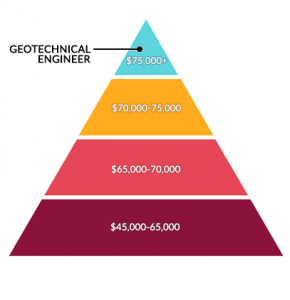Geotheta Can Be Fun For Everyone
Geotheta Can Be Fun For Everyone
Blog Article
The Facts About Geotheta Uncovered
Table of ContentsAll About GeothetaSome Known Details About Geotheta Some Ideas on Geotheta You Need To KnowNot known Facts About Geotheta
They team up with civil designers, structural designers, architects, and other specialists to integrate geotechnical factors to consider into the total project layout and building process. This calls for effective synergy, control, and interaction to make certain that the geotechnical aspects line up with the task purposes and fulfill regulative demands.Mining & Materials Engineering: Principles of boring, penetration rates, and factors impacting the choice of exploration technique. Features of nitroglycerins, firing systems and blast patterns. Blowing up methods in surface and underground functions. Special blasting methods at excavation boundaries. Vibration and sound control. Mechanical and constant techniques to fragmentation, consisting of longwall shearing and fullface boring.
Modelling of fragment and bit size circulations; comminution as a transfer feature. Comminution modern technology: crushing, grinding, size category. Integrated analysis of fragmentation and comminution operations. Supplied by: Mining & Products Design.
The 3-Minute Rule for Geotheta
Bachelor's level programs in civil, geotechnical, geological, and ecological design usually last four years and include general education courses in English, social scientific research, and the liberal arts, in addition to programs in innovative maths, architectural geology, and liquid mineralogy. (https://filesharingtalk.com/members/599923-geotheta)
Geotechnical engineering involves the evaluation of the dirt and rock problems at a particular website, and their implications for the growth of that website. As many structures count on the ground for assistance, it is without surprise that an in-depth understanding of the ground conditions, and the suitability of foundation systems, are essential to the lasting security and performance of the structure or structure.
Being experts in the examination of geological developments and ground behaviour, geotechnical engineers perform clinical examinations and screening to comprehend the influence these geological formations might have on the design and construction of building, civil and infrastructure projects. This know-how is vital for the layout and construction of buildings, roadways, passages, dams, bridges, and water system and sewer systems.
The geotechnical group at Douglas Partners routinely seek advice from architects, design engineers, developers, and builders to make referrals on design and development propositions to make certain that the developed frameworks are suitably designed for the ground problems. The style of footing systems requires to consider the weight of the structure, the ability of the ground to support that weight together with motion resistances and efficient building and construction.
Everything about Geotheta
This task is substantially simplified by the usage of our Douglas Map geospatial system that makes this details easily available in a very easy to use web browser user interface. A geotechnical engineer will guide the boring of boreholes and test pits to accumulate dirt and various other samples, and additionally analyze surface area functions and ground exposures to develop a geotechnical design of the subsurface conditions.
Depending on the project type and ground problems encountered, lab testing may amongst various other things examine stamina, compressibility, sensitivity and/or leaks in the structure of dirt and rock examples. After this information is collected and collated, the results are utilized for a geotechnical version of the site, which is usually provided as sections throughout the site.

A geotechnical investigation by nature can just analyze the ground conditions at the places pierced or excavated. Natural variations in soil and rock problems can happen across a site and in between test places. It is consequently excellent practice that the geotechnical designer be preserved throughout building of the task to offer on-site confirmation that the ground conditions run into are regular with the assumptions and guidance supplied in the geotechnical investigation report.
Geotheta Fundamentals Explained
Geotechnical engineers utilize their comprehensive understanding of dirt and rock to evaluate threat and address troubles on diverse facilities projectsGeotechnical design is a specialist branch of civil design which considers the practices of earth products and the application of soil and rock mechanics. Consulting Engineer. As a geotechnical designer, you will certainly analyze the physical, mechanical and chemical properties of dirt and rock in order to create foundations, retaining frameworks and earthworks
Geotechnical engineering is carefully linked to and overlaps with, both engineering geology and ground design - https://geotheta.weebly.com/. It's feasible to specialise in geotechnics or help a geotechnical company yet be known as a design rock hound or a ground designer. As a geotechnical designer, you'll require to: construct and keep connections with customers and various other specialists associated with the website, throughout each projectmaintain security requirements on site bear in mind expense implications when you make recommendationsstudy geological maps and aerial photos from a series of sources and from different time periodsexamine building plans to see just how possible they are based on your understanding of the siteinvestigate threats or geological dangers for the sitesearch for eco sensitive functions, such as land fill begin to create accurate and expository ground modelsplan area investigationsdrill and analyse samples of bedrock, dirt, groundwater and extra materials manage other experts on sitesolve technological issues as they arise, such as unexpected frameworks at drill sitesmonitor conditions during and after building and construction to make certain structures are stable in the brief and long termadding data accumulated on website to your initial researchcreating geotechnical computations, illustrations, and 2 or three-dimensional computer versions analyzing the datamaking referrals concerning the proposed use of the website

Report this page